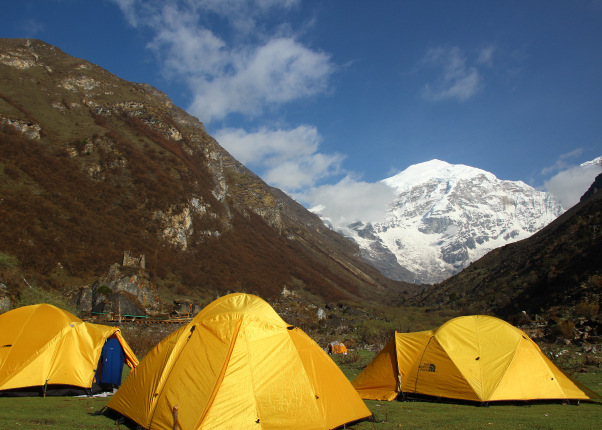
Upon your arrival at Paro airport, you will receive a warm welcome from your Ing Travel Company representative. After completing the arrival formalities, you’ll be comfortably transferred to your hotel. In the evening, take a leisurely stroll through Paro’s vibrant market and charming town, getting your first taste of Bhutan’s unique atmosphere.
Begin your day with a visit to Ta Dzong, which was built in 1651 as a watchtower and later transformed into Bhutan’s National Museum in 1968. The museum’s remarkable collection includes art, relics, religious thangkha paintings, postage stamps, coins, handicrafts, and a small natural history collection. Below Ta Dzong stands Rinpung Dzong, also known as Paro Dzong, constructed in 1646 to protect the Paro valley from Tibetan invaders. In the afternoon, explore Kyichu Lhakhang, one of Bhutan’s oldest and most sacred shrines. Your day will be a delightful immersion into Paro’s rich cultural heritage.
Your trek begins at Drukgyel Dzong (2,580m) with a short descent on a wide trail. You’ll gradually climb through well-maintained rice terraces, millet fields, and apple orchards. Passing through forests, you’ll soon reach the army post of Gunitsawa (2,810m), the last stop before Tibet. Continue your ascent just beyond Sharma Zampa (2,870m), where you’ll find several serene camping spots in meadows surrounded by trees.
Your journey follows the Pa Chu (Paro river), leading you through pine, oak, and spruce forests. After crossing a bridge to the left bank of the river, you’ll stop for a hot lunch. As you continue along the river, you’ll ascend through rhododendron forests, cross the river once more, and finally reach your campsite (3,750m). Bhutan’s stunning natural beauty surrounds you on this day.
Today’s path ascends as you pass an army camp. You’ll follow the river above the tree line, savoring mesmerizing views of the surrounding peaks. A hot lunch at a yak herder’s camp is a delightful experience. Jangothang (4,040m), your campsite for the night, offers breathtaking views of Chomolhari and Jichu Drake.
As you journey through dwarf rhododendron forests and reach Janetsho Lake, you’ll have the chance to encounter yak herders and gain insights into their way of life. Camp overnight close to Simkota Lake, where you may even catch a lake trout for dinner. The stunning beauty of Bhutan’s landscapes continues to captivate.
The trail diverges from the Chomolhari trek route, as you climb upward to Yeli-la (4,820m) from the largely treeless Mo Chu valley. You’ll enjoy breathtaking views of Chomolhari, Gangchenta, Tserimgang, and Masagang from this pass. Your descent takes you to Shodu (4,100m), where a meadow with a chorten invites you to set up camp.
You reenter the tree line, as your path follows the Thimphu Chu, guiding you through rhododendron, juniper, and mixed alpine forests. Along the way, you’ll witness stunning cliff faces and waterfalls. After a hot lunch by the riverside, the trail leads you upward to the ruins of Barshong Dzong (3,600m), where you’ll camp for the night.
The trail descends gently through a dense forest of rhododendron, birch, and conifers, eventually dropping steeply to meet the Thimphu Chu. You’ll journey alongside the river, ascending over ridges and descending into gullies before reaching a campsite at 3,600m. Bhutan’s stunning natural beauty continues to captivate.
Following a winding trail that meanders through side valleys above the Thimphu Chu, you’ll ascend through a forest of conifers and high-altitude broadleaf species to a pass at 3,510m. The trail then descends steeply to the river, following it southward to the road head at Dodena (2,600m). Ing Travel Company’s transportation awaits you here, taking you to Thimphu. Overnight at a hotel in Thimphu.
Enjoy a full day of sightseeing in Thimphu valley, exploring cultural treasures such as the National Memorial Chorten, Tashichhodzong, National Library, Institute for Zorig Chusum, National Institute of Traditional Medicine, and Handicrafts Emporium. In the evening, drive back to Paro and rest at your hotel.
Your journey through Bhutan’s mesmerizing landscapes and rich cultural heritage comes to a close. After breakfast, you’ll be transferred to Paro airport for your onward flight, leaving Bhutan with unforgettable memories of its natural beauty and warm hospitality. Ing Travel Company ensures a seamless and memorable experience throughout the tour.
Fill the form and we will be in touch.